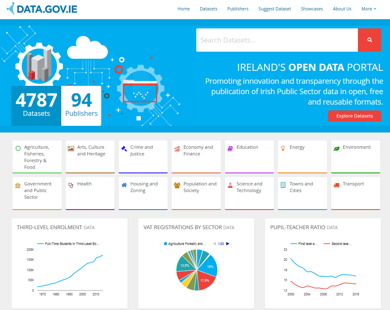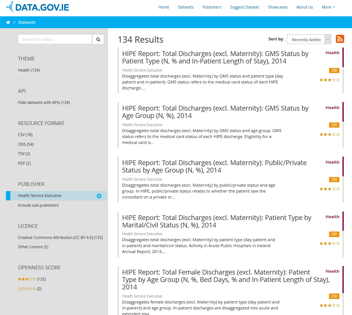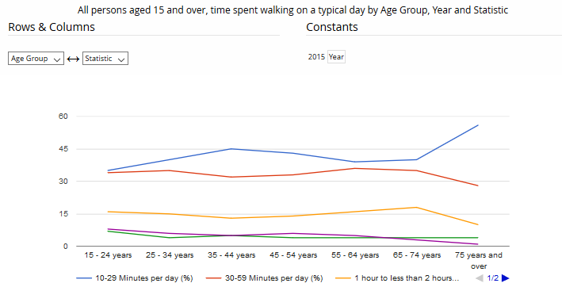134 OpenData Sets published to date by the HSE
Improving Patient Care, Empowering Choice and Supporting Innovation Through Open Health Data
Open Health Data is the most popular category of data that people search for on the National Open Data Portal data.gov.ie. The availability of Open Data published by public-sector bodies such as the HSE, the Health Research Board, the National Treatment Purchase Fund, and the CSO, means that people can easily find, understand and reuse the information they are looking for. The benefits of Open Data are twofold; on the one hand, facilitating transparency of the Public Sector and on the other providing a valuable resource that can drive innovation.
Where is my ne arest health centre?
arest health centre?
What are the most common diagnosis in emergency departments?
When is the time of first visit to a doctor or hospital during pregnancy?
What are the current waiting-times for orthopaedics out-patient appointment in my local hospital?
All of this information and more is currently available as Open Data, meaning that anyone can freely find and use it. Critically, Open Data does not include the publication of personal or sensitive data that would in any way infringe an individual’s rights under data protection legislation.
In his foreword to the HSE Open Health Data Governance Strategy, Richard Corbridge CIO HSE, highlights that “the availability of Open Data can empower citizens and support clinicians, care providers, and researchers make better decisions, spur new innovations and identify efficiencies while ensuring that personal data remains confidential.”
As part of eHealth Ireland, the HSE has published 134 open datasets to date. This includes valuable data from the Hospital In-Patient Enquiry Scheme (HIPE), a system that collects information on hospital day cases and in-patients in Ireland, and from the National Perinatal Reporting System (NPRS), which provides national statistics on perinatal events, in particular data on pregnancy outcomes, perinatal mortality and important aspects of perinatal care. This Open Data provides insights into key areas of the health service and can be used for oversight, analysis of outcomes and informed decision-making.

Publishing health-service directory information as Open Data is also important, so that people can understand the services that are available, where they are located and how they can avail of them. For example, the location of all acute general hospitals in Ireland, as well as a list of health centres is currently available on data.gov.ie.
The National Treatment Purchase Fund (NTPF) is responsible for the collection, collation and validation of Inpatient, Day Case and Outpatient waiting lists. The NTPF publishes monthly reports as Open Data that show the total numbers waiting for Inpatient and Day Case treatment in each Hospital/Group and Specialty, as well as the total number of patients waiting for a first appointment at a consultant-led Outpatient clinic. The availability of NTPF data is essential to understand current healthcare practices and can be used by healthcare practitioners, management and the general public.
Open Health Data is also published by the CSO, such as the results from the Irish Health Survey. This data includes information on the prevalence of conditions, visits to health professionals, use of medication, etc.

Ireland recently achieved third place in a study on Open Data maturity in Europe. The report looked at the presence of Open Data policies, the maturity of the Open Data portal, and the impact of Open Data. In Ireland, the publication of Irish Public Sector Information in open, free and reusable formats is recognised as a key element of the Public Service Reform agenda. As part of the HSE Open Health Data Governance Strategy, the HSE will continue to make more Open Data available in 2017, improving patient care, empowering choice and supporting innovation through open access to HSE data.
- The Rotunda Hospital live with MN-CMS
- #HandoverCIO Update
- A Pint of Digital Health
- eGovernment Awards
- MN-CMS starts to use PowerTrials functions
- MN-CMS & CCIO shortlisted for Ireland's eGovernment Awards
- Sligo University Hospital to implement NCHD e-rostering
- 161 Personas & Scenarios published
- Maternity EHR goes live in University Hospital Kerry
- 134 OpenData Sets published to date by the HSE
